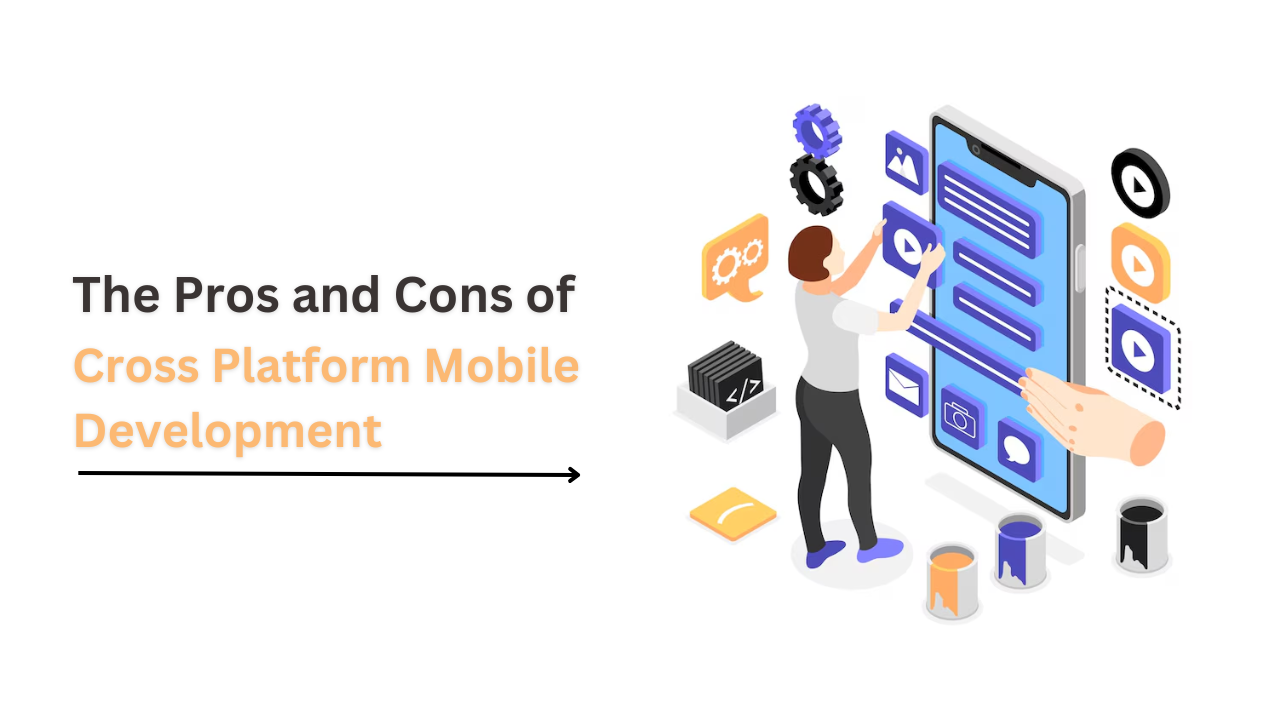Notifications

9 minutes, 35 seconds
-320 Views 0 Comments 0 Likes 0 Reviews

Let's weigh the speed and trade-offs of cross-platform mobile apps!
Where the idea of an app is shared across two operating systems, for different target audiences, with different budgets, different devices, and differently coded, has become a dominant strategy for app creators seeking to maximize reach with a streamlined development process.
The subsequent paragraphs narrate its benefits, drawbacks, dependencies that create hurdles in the normal app development process, frameworks that are an integral part, and the minor adaptability that is required from converting apps made for one platform to be suitable for another platform via framework-specific API integration.
I will not clutter this small writeup with Android and iOS-specific keywords, as they are extremely popular and common and are easily hooked by AI checker and plagiarism checker tools.
The market reach has increased. Cross OS apps access a larger user base by deploying the same app on both iOS and Android. Less time is involved in making, testing, and deploying the app. And the testing is across both the platforms on which it has to run. So when the effort to do the same thing twice is reduced to half, the app becomes ready to be published in a short amount of time. React Native, Xamarin (.NET MAUI), Ionic; NativeScript, Appcelerator Titanium, PhoneGap (Apache Cordova), Node.js, Kotlin Multiplatform, Framework7, Solar 2D, NativeScript
Cordova (Apache Cordova), PhoneGap, Sencha Touch, Node.js, and Qt.
Besides performance, platform-specific limitations, and UI consistency, cross-platform app development faces challenges like debugging complexities, reliance on third-party frameworks, integration issues, and potentially delayed updates compared to native apps. Cross-platform development relies on third-party frameworks like Flutter, React Native, or Xamarin which may or may not introduce dependency issues or limit access to the latest platform updates. Integrating with platform-specific APIs or services can be more challenging in cross-platform development;
There’s more. New platform features or updates might not be immediately available in cross-platform apps, leading to a delay in accessing the latest functionalities. Cross-platform frameworks might not provide full access to the native SDKs, potentially limiting the ability to utilize advanced device features. Cross-platform apps adhere to the guidelines of each app store; achieving the same level of native UX/UI design quality can be challenging.
The approach of optimizing development time and cost allows developers to create a single codebase that can be deployed on both iOS and Android platforms, eliminating the need to build separate apps for each.
Many popular apps, like Airbnb, Instagram, and Duolingo, web applications that can be accessed on various browsers and devices; desktop applications; internal applications for businesses; game engines, like Unity;
Of course it won’t work for just the sake of it. It has to abide by the protocols, likes of the audience across platforms and some common sense. Swiggy just launched their fasting mode without a huge promo push. It is exactly what it sounds like, Food notifications take a break while you do.
If you’re fasting, you won’t get reminders about food at the wrong times, but once iftaar hits, everything is back to normal. People just noticed it, liked it and started talking. That’s kind of insane because when a feature spreads through WOM, that’s when you know it works.
While cross-platform app development still has limitations compared to native development, the statements about its future advancements are not entirely baseless, as frameworks like Flutter and React Native are actively evolving to improve performance and native-like features, making the gap smaller. What’s shocking is that despite improvements, complex applications with high-performance demands may still benefit significantly from native development.
Also, integrating with unique platform features or designing highly customized UIs can sometimes require additional work even with advanced cross-platform frameworks. Developers need to be proficient in the chosen cross-platform framework, which may require additional learning compared to native development. So when time-to-market and cost are critical factors you just know what is to be done.
If your primary concern is rapid development, cost-efficiency, and reaching a broad audience quickly, cross-platform development can be a valuable option. However, if you choose to go with performance, speed, third-party integrations, and platform-specific design, then native app development might be more suitable.
As a developer, the allure of writing once, running everywhere with cross-platform mobile development is undeniable. While frameworks like React Native, Flutter, and Xamarin have made significant strides, there are hidden complexities:
Many companies specialize in cross-platform mobile app development, and some top mobile app development companies also offer cross-platform solutions, utilizing frameworks like Flutter, React Native, and Xamarin to build apps for multiple platforms from a single codebase like Suffescom Solutions Inc., Binary Studio, Azumo, Goji Labs, Mercury Development, Naked Development, AppMakers USA, Kanda Software, Techugo, ValueCoders, MobiDev, and SynapseIndia.
While offering a fast track to deploying apps across various platforms with a consistent user interface, cross-platform mobile app development still faces challenges in achieving truly native-like performance and seamlessly integrating with platform-specific features. A recent survey by Stack Overflow found that over 70% of developers use cross-platform frameworks like React Native, Flutter, or Xamarin (discussed above), highlighting its widespread adoption and indicating a need for continuous optimization to overcome potential limitations.
Android App Development Company Cross Platform Development mobile app development companies iOS app development companies

